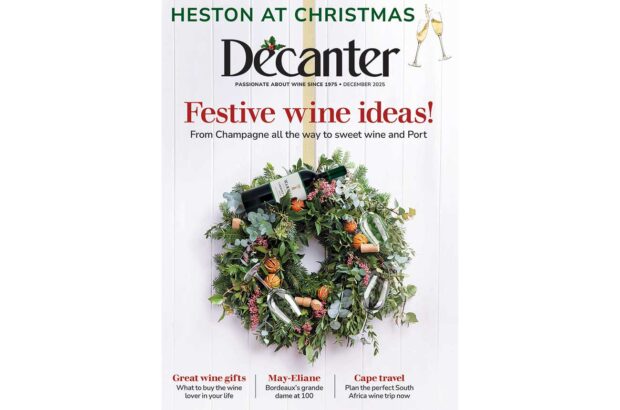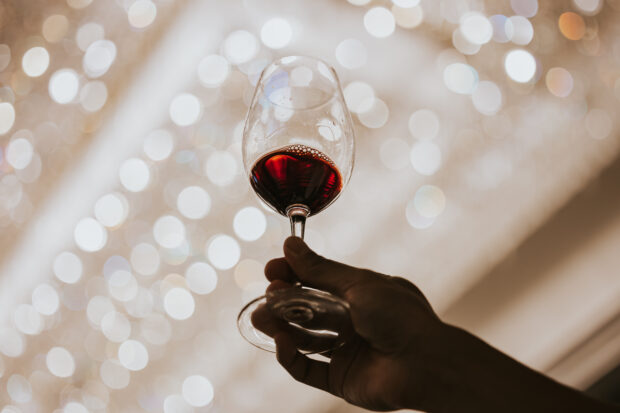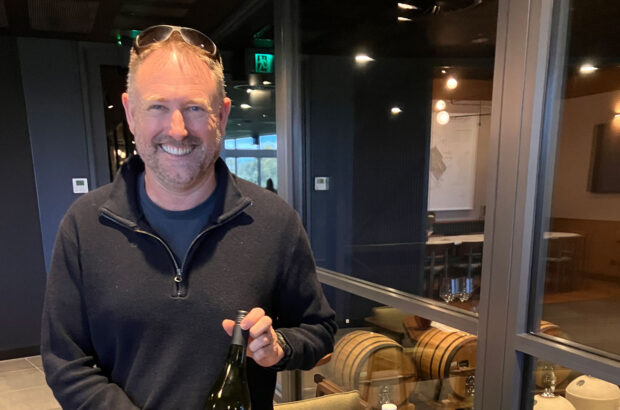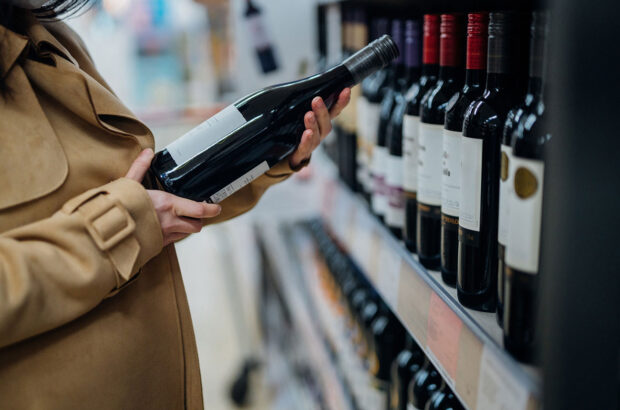It’s been a year since Rudy Kurniawan was arrested for allegedly faking rare Burgundy and Bordeaux bottles and selling them at auction for millions of pounds. Mike Steinberger delves deeper into the case and looks at the impact the fraud has had on producers, collectors and wine lovers.
The century is still young, but just after dawn on 8 March last year, Rudy Kurniawan was arrested at his home in suburban Los Angeles and charged with what may ultimately go down as the wine crime of the century. Kurniawan was a 35-year-old Indonesian-born collector who, in the early 2000s, seemingly out of nowhere, became the biggest player on the fine-wine market, buying and selling millions of dollars worth of rarities.
>Kurniawan had been under suspicion since 2008, when he tried to sell a bottle of Domaine Ponsot’s Clos de la Roche 1929 and a cache of its Clos-St-Denis, spanning the years 1945 to 1971, at an Acker Merrall & Condit auction in New York. When it turned out that Domaine Ponsot hadn’t made any Clos-St-Denis prior to 1982 and hadn’t estate bottled the Clos de la Roche before 1934, the wines were withdrawn from the sale, and Kurniawan seemed to disappear.
But both Laurent Ponsot, the domaine’s proprietor, and Bill Koch, the billionaire American collector who has been waging a relentless campaign against wine fraud, began pursuing Kurniawan. The FBI eventually got involved and, on 8 March, law enforcement officials arrested Kurniawan at his home in Arcadia, California. On entering, they made a startling discovery: a counterfeiting factory, with scores of bottles seemingly in the process of being turned into fakes. At auction and privately, Kurniawan sold thousands of rare wines and, if he was indeed counterfeiting, it is possible that he has completely corrupted the market for old Bordeaux and Burgundies.
Nearly a year later, Kurniawan is sitting in a jail cell in Brooklyn, New York, awaiting trial – a brutal comedown for a man who dazzled the wine world with his prodigious cellar, formidable tasting skills and lavish lifestyle. However, even as he moves closer to a legal reckoning, we are still no closer to figuring out who Kurniawan really was and what motivated him to allegedly flood the market with fake wines.
Was he a crook from the start, or did financial distress drive him to start producing fakes? And who might have been his accomplices? Given the volume of wine he sold – $35 million at two auctions alone in 2006, plus millions more at other auctions and through private sales – logic would suggest that he had help. However, it’s entirely possible that even if Kurniawan is convicted, answers to these and many other questions may never be known.

Media interest
The case has certainly not lacked for attention. Kurniawan’s arrest made headlines around the world and was the subject of feature stories in New York magazine, Playboy and Vanity Fair (full disclosure: I wrote the Vanity Fair article, for which film rights were optioned; with some luck, the Kurniawan saga will be coming to a cinema near you in the not-too-distant future). It also prompted several television shows in the US to run features on the issue of wine fraud.
While the Hardy Rodenstock story attracted plenty of attention, chiefly thanks to Ben Wallace’s bestselling book The Billionaire’s Vinegar (Rodenstock is the German collector who was the source of the ‘Thomas Jefferson’ bottles that some authorities declared fraudulent; see Decanter.com), it never kicked up quite as much interest as the Kurniawan tale. No doubt that has something to do with the fact that Rodenstock was never actually arrested and that his alleged mischief took place many years earlier. It perhaps also has something to do with the timing of the Kurniawan imbroglio. There are lots of people these days who enjoy seeing very wealthy people made to look foolish, and schadenfreude has unquestionably fed some of the interest in the Kurniawan matter.
The media blitz has since abated, leaving the lawyers to tangle over the evidence against Kurniawan, and the fine wine market to sift through the damage resulting from his alleged crimes. Although Kurniawan was arrested in Los Angeles, the case against him was filed by the district attorney for the Southern District of New York. Kurniawan was initially held without bail at a federal prison in Los Angeles. On 9 May, a grand jury in New York indicted him on one count of mail fraud and three counts of wire fraud, paving the way for his extradition to New York. On arrival, he was sent to the Metropolitan Detention Center in Brooklyn and has remained there since.
On 23 May, he was arraigned at the federal courthouse in lower Manhattan. I was in the room, along with a few other reporters. Kurniawan, accompanied by his lawyer, entered the chamber dressed in his prison-issue khaki shirt and khaki trousers. His face was noticeably pale and drawn, and he appeared tense. As he walked in, he cast a glance back at the visitors section; I had the sense that he was looking to see if there were any familiar faces. But none of his New York friends had come. The hearing was over quickly, as Kurniawan waived the right to hear the charges against him read by the judge. Presumably he was very familiar by that point with the allegations against him, to which he pleaded not guilty during the hearing.
Mounting evidence
Many people assumed Kurniawan would cut a deal with the government in order to reduce an eventual prison sentence. It was thought that if he had incriminating evidence against other individuals or companies, he would share that information with prosecutors in exchange for a reduced sentence. But to this point, no deal has been cut; in fact, Kurniawan’s lawyers spent the past few months challenging the legality of the FBI’s search of Kurniawan’s home on the day he was arrested.
In October, they filed what is called a ‘motion to suppress’ in which they claimed that much of the evidence that the government has submitted was obtained illegally by agents who were doing a ‘protective sweep’ of Kurniawan’s home at the time they arrested him. After obtaining a search warrant, FBI agents re-entered the house and did a full investigation of the property. Kurniawan’s lawyers didn’t dispute that the government had sufficient grounds to charge Kurniawan with a crime, based on evidence that it obtained prior to his arrest. Their argument was that there was no reason for the FBI to be granted a search warrant and that the evidence gathered at Kurniawan’s home should be thrown out.
In response, the government said there was ample evidence obtained before the arrest to justify a search warrant and that FBI agents encountered incriminating evidence as soon as Kurniawan opened the door on the morning of his arrest – boxes of wine were stacked in the front foyer, marked with names which included Domaine de la Romanée-Conti and Maison Joseph Drouhin. On 17 January, Judge Richard Berman denied the motion to suppress, ruling that the search warrant was justified. Thus, it seems the only options left for Kurniawan are to try to strike a plea agreement with the government or to take his chances at trial.
Don Cornwell admits he is surprised that no one else has yet been charged in relation to the Kurniawan matter but remains confident it will happen. Cornwell is the Los Angeles-based attorney and Burgundy enthusiast who, in February 2012, published a lengthy post on the website Wineberserkers.com alleging that Kurniawan, acting through a third party, had consigned some highly suspicious wines to an upcoming auction in London. A number of the bottles that Cornwell identified as problematic, including wines from Domaine de la Romanée-Conti, were removed from the auction A few weeks later, Kurniawan was arrested amid concerns that he was a flight risk.
Cornwell, who has doggedly pursued leads in the Kurniawan matter (the thread he started on Wineberserkers.com is now surely the most widely read post on a wine discussion board ever; as of mid February 2013, it had over 4,500 comments and more than 340,000 views), believes the young collector was ‘the mastermind’ of the alleged counterfeiting scheme but surely had assistance.
He adds that if he is correct about Kurniawan’s lead role, it would go some way to explaining why no plea agreement has yet been struck; unless Kurniawan has information implicating an even bigger player, such as an auction house, prosecutors have no reason at this point to play nice with him. ‘Assuming that I’m correct that Rudy is at the top of the pyramid of the scheme,’ says Cornwell, ‘the government has little incentive to offer him any concessions unless it is to obtain evidence which would support criminal charges against one or more of the auction companies through whom Rudy sold wines believed to be counterfeit.’

Economic impact
Cornwell concedes that he is a bit puzzled by how well the market for rare Bordeaux and Burgundies has held up despite Kurniawan’s arrest. Given how much wine Kurniawan sold, it stood to reason that his arrest would sharply depress sales of older, collectible clarets and Burgundies. That has not been the case, however. Worldwide, auction sales in 2012 totalled $322m, versus $397m in 2011. But most analysts peg the decline to economic concerns and weaker demand from Asia and, despite the fall-off in sales, business for the major auction houses remained brisk. Even Acker Merrall & Condit, the auction house most closely associated with Kurniawan, had a strong year; it notched $83m in total sales. If Acker has suffered any adverse consequences on account of its connection to the alleged fraudster, it is not reflected at the cash register.
But one auction house executive, who asked not to be named, believes the Kurniawan saga has had an effect on buyers. He thinks they are much less apt these days to take it on faith – simply to accept an auction house’s assurances that the wines it sells are legitimate. ‘My feeling is that this whole thing has made people ask some good questions and hopefully demand a certain minimum standard of due diligence,’ he says. ‘People don’t like to be hosed regardless of what part of the world they come from. People are being more conscious of the role of “actual” provenance.’ By this, he means that prospective buyers are demanding to see original receipts and other material that can confirm the authenticity of the wines they are looking to buy. Maureen Downey of Chai Consulting, a San Francisco-based fine-wine appraiser, has been very outspoken on the issue of counterfeiting. She says Kurniawan’s arrest has had a limited effect on the market. ‘Many collectors are more vigilant,’ she says. ‘They are asking the right questions, baulking at the “too good to be true” sales and refusing to be had by unscrupulous vendors. But so very many are still in blissful denial. Some just don’t want the party to stop.’ She cites a conversation had with a major collector recently who bought wines from Kurniawan that he knows to be fakes; not only is he not pursuing redress, he spent the dinner praising Kurniawan’s tasting aptitude. ‘That’s the level of denial that exists in some circles,’ she says.
Among the collectors in New York and Los Angeles who socialised with Kurniawan, there is a clear desire to see the whole thing go away. Few of them have been willing to discuss the matter publicly, and several seem to have vanished from the wine scene. The reticence is understandable: with Kurniawan now in jail and Bill Koch still pursuing his lawsuit against him, laying low would seem to be a prudent strategy. However, a number of these collectors are also known to be sitting on millions of dollars worth of wines procured from Kurniawan, either via auctions or direct sales.
The fear, of course, is that many of these bottles will eventually be sold – that rather than swallowing their losses, some of Kurniawan’s victims may try to dump the wines on unsuspecting buyers. And it has generally been assumed that the suspect wines will be sold in Asia. Downey sees Asia as particularly vulnerable to the fraud problem. ‘The buyers are not knowledgeable enough, and they still trust vendors who oftentimes themselves are not knowledgeable,’ she says. ‘The fine and rare boom in Hong Kong has caused a flood of relatively inexperienced wine professionals to head out there. Many of them could not spot a fake if it bit them.’
Tip of the iceberg?
One place where the Kurniawan affair has unquestionably registered is Burgundy. While Hardy Rodenstock focused mainly on old Bordeaux, Kurniawan’s specialty was rare Burgundies. It is no exaggeration to say that he essentially created a market for old wines from producers such as Roumier, Rousseau and Ponsot.
When I visited Burgundy in March 2012 to do reporting for my Vanity Fair article, I found an undercurrent of anger over the Kurniawan matter. There was anger over the fact that Burgundy, through no fault of its own, found itself at the centre of this sordid tale. One grower put it bluntly: the high-roller culture in the US that gave rise to Kurniawan was completely alien to Burgundy, completely anathema.
There was also frustration over suggestions that the producers needed to do more to combat fraud. They acknowledged the seriousness of counterfeiting and conceded that it was not good for Burgundy. But in their view, it was absurd to expect Burgundians to start policing for fraudulent bottles; these small, family-run domaines had neither the time nor resources to perform due diligence on every bottle of their wine sold on the secondary market. If collectors wanted to buy rare old Burgundies, it wasn’t the responsibility of the wineries to protect them from fraud. As one winemaker put it to me, ‘If people want to avoid counterfeit bottles, they should just buy current vintages on release’.
The counterfeiting problem didn’t begin with Kurniawan, and it won’t end with him. As long as there are people willing to pay thousands of dollars for a bottle of wine, there is going to be an incentive for other people to produce fakes. And the demand for rare wines is not likely to dissipate anytime soon. Old, expensive wines have become trophies for the most affluent among us; a bottle of Cheval Blanc 1947 or Romanée-Conti 1945 is as much a bragging right as a Gulfstream jet or a Ferrari. And the desire to be able to say you’ve tasted such immortal juice raises an interesting question, one that has come up repeatedly in conversations I’ve had about the Kurniawan case with non-wine enthusiasts: if these collectors believed they were drinking the genuine articles and were happy with the wines, then how much of a crime was really committed? Fraud is fraud, of course, and no one is suggesting that Kurniawan should not face justice for the crimes he allegedly committed. But the metaphysical question is an interesting one, and perhaps explains why the rare wine market has continued to flourish despite the counterfeiting epidemic: fantasy is so much more appealing than reality.
Written by Mike Steinberger







